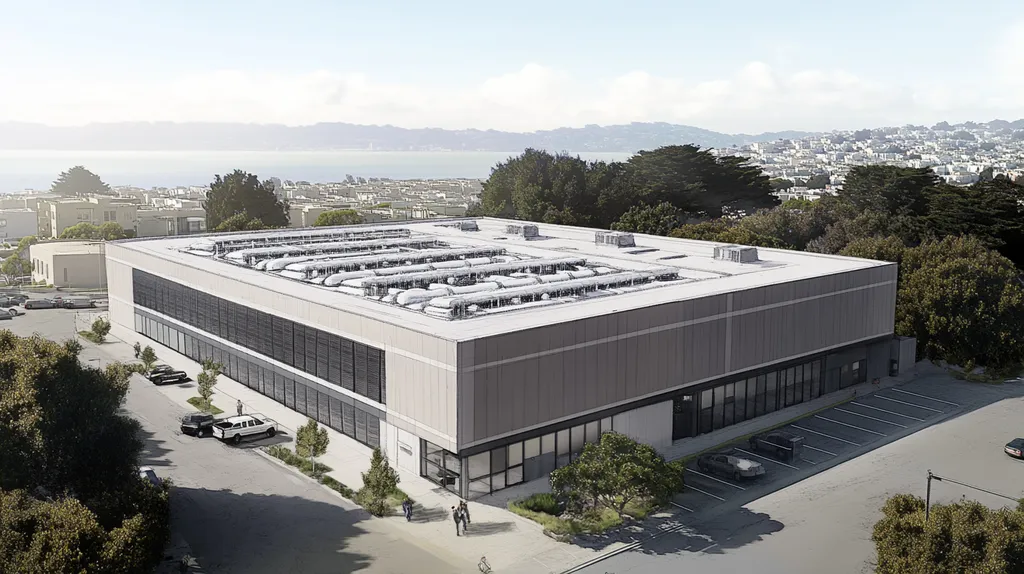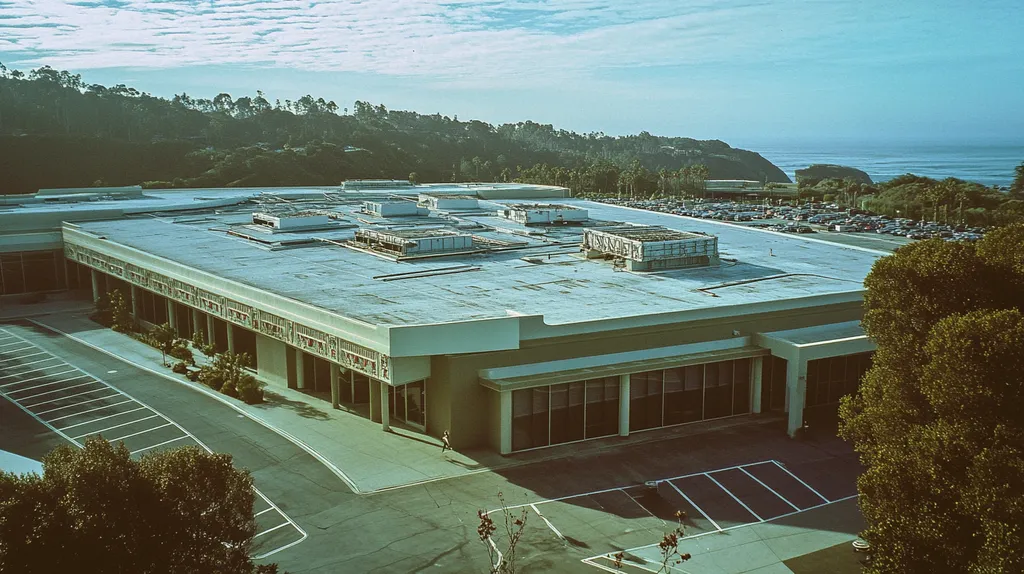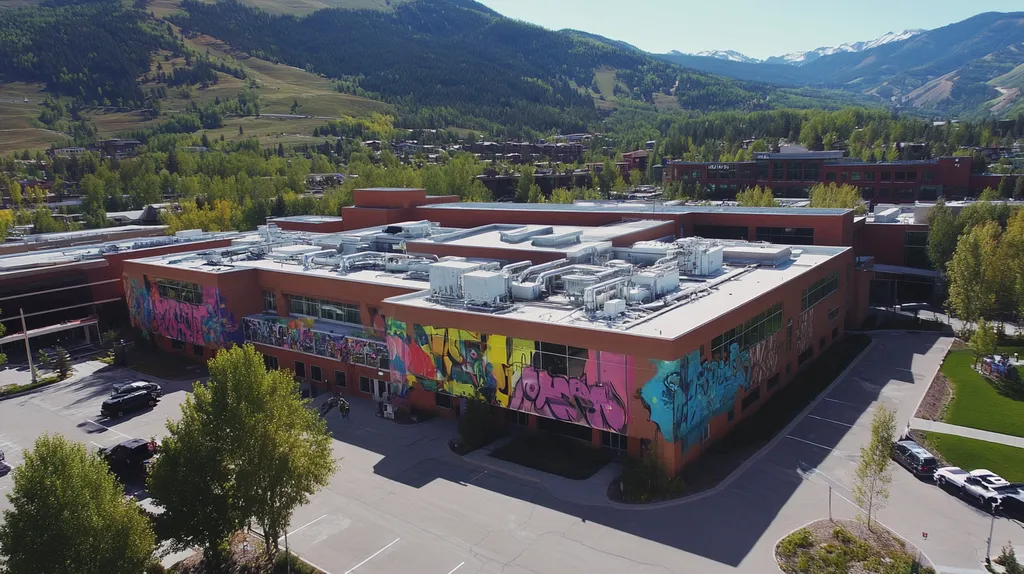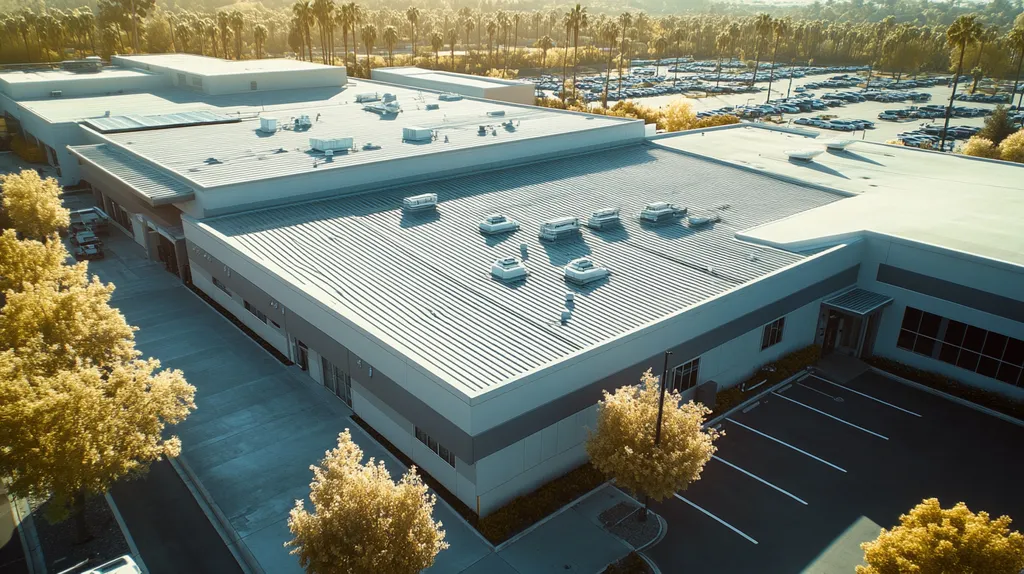Welcome to today’s Battle Royale featuring two roofing heavyweights: “Ballasted Solar Systems” in the east corner versus “Penetrating Mounts” in the west!
Tonight’s showdown pits these contenders against each other across six punishing rounds designed to test every aspect of their performance for Commercial Roof Warranty.
At stake? Millions in potential costs, decades of building protection, and the critical performance demands of modern commercial and industrial facilities.
Our professional judging panel will evaluate each round on technical merit, real-world performance, and value delivery. After all six rounds, we’ll declare our ultimate champion.
Ladies and gentlemen, facility managers and building owners… it’s time to rumble!
ROUND 1: INITIAL COSTS & INSTALLATION
When commercial property owners consider solar installations, the mounting system choice becomes a critical financial decision. With commercial solar installations averaging $2-3 per watt and typical systems ranging from 100-500 kilowatts, the stakes are significant. The mounting method affects not just immediate costs, but long-term roof integrity and warranty protection.
Material Expenses
The material cost differential between mounting systems significantly impacts project budgets. Ballasted systems primarily require concrete blocks or pavers along with basic mounting hardware, representing a straightforward material list with predictable costs.
Penetrating mount systems demand specialized flashing kits, sealants, and waterproofing materials to maintain roof integrity. These additional components typically increase material costs by 15-25% compared to ballasted solutions.
In general, properly installed commercial solar panels require careful consideration of warranty terms, installation procedures, and contractor expertise to maintain roof protection. (source: Tandem Infrastructure)
ADVANTAGE: Ballasted Systems
Installation Complexity
Installation complexity directly affects labor costs and project risk. Ballasted systems follow a simple placement process, requiring minimal specialized tools and reducing the chance of installation errors.
Penetrating mounts demand precise measurements, careful drilling, and meticulous waterproofing. Each penetration point creates potential failure risks and requires experienced installers to execute properly.
The additional complexity of penetrating mounts extends installation time and increases labor costs by approximately 30-40% compared to ballasted alternatives.
ADVANTAGE: Ballasted Systems
Project Timeline
Project duration impacts both direct costs and business disruption. Ballasted system installations typically complete in 5-7 working days for a 100kW system, minimizing roof access time and business interruption.
Penetrating mount installations require additional time for precise measurements, drilling operations, and weatherproofing verification. These systems usually demand 8-12 working days for comparable installations.
The extended timeline for penetrating mounts increases both labor costs and the potential for weather-related delays during installation.
ADVANTAGE: Ballasted Systems
ROUND 1 WINNER: Ballasted Solar Systems
ROUND 2: DURABILITY & LIFESPAN
The long-term performance of solar mounting systems directly impacts commercial property values and operational costs. A mounting system failure can trigger extensive repairs, potentially costing $50,000 or more for a typical 100kW installation. Understanding how different mounting options affect roof durability helps property owners make informed decisions that protect their investments.
Material Resistance and Protection
Mounting system materials must withstand decades of environmental stress while maintaining structural integrity. Ballasted systems utilize UV-resistant bases and corrosion-proof components that distribute weight evenly across the roof surface.
Penetrating mounts rely on aluminum or stainless steel attachments that pierce the roofing membrane. While these materials resist corrosion, each penetration point creates a potential failure location requiring ongoing maintenance.
The uniformity of ballasted system components reduces material fatigue compared to penetrating mounts, which experience concentrated stress at anchor points. This stress difference significantly impacts long-term performance.
ADVANTAGE: Ballasted Systems
Exposure to Environmental Factors
Weather exposure tests mounting system durability through temperature cycles, wind loads, and precipitation. Ballasted systems naturally flex with roof movement, reducing strain during thermal expansion and contraction.
Penetrating mounts create fixed points that can resist natural roof movement, potentially leading to membrane tears or fastener loosening. These rigid connections often transfer more force to the roof structure during high winds.
While both systems must meet wind uplift requirements, ballasted solutions adapt better to environmental stresses without compromising roof integrity. This flexibility provides superior long-term protection.
ADVANTAGE: Ballasted Systems
Long-Term Cost Implications
Durability directly affects maintenance expenses and potential repair costs over the system’s 25-30 year lifespan. Ballasted systems typically require only periodic inspections and occasional ballast adjustment, minimizing long-term maintenance expenses.
Penetrating mounts demand regular inspection of all penetration points and periodic resealing to prevent leaks. These ongoing maintenance requirements increase both labor costs and the risk of water damage.
The simpler maintenance profile of ballasted systems translates to more predictable long-term costs and reduced risk of expensive emergency repairs.
ADVANTAGE: Ballasted Systems
ROUND 2 WINNER: Ballasted Solar Systems
ROUND 3: PERFORMANCE FACTORS
Commercial solar installations represent significant investments, with mounting system choices directly impacting both energy generation and roof integrity. The wrong decision can lead to performance issues, structural damage, and voided warranties – potentially costing property owners hundreds of thousands in repairs and replacements over the system’s lifetime.
Weight and Structure Impact
Load distribution across commercial roofs significantly influences structural integrity and warranty compliance. A typical 100kW solar installation adds 15,000 to 25,000 pounds of additional weight that must be properly managed to prevent damage.
Ballasted systems distribute weight loads evenly across the roof surface through engineered spacing of concrete blocks or pavers. This uniform distribution minimizes stress points and maintains the roof’s natural flexibility.
Penetrating mounts concentrate forces at specific attachment points, creating potential stress zones that can lead to membrane fatigue or structural strain. These concentrated loads often require additional engineering analysis and structural reinforcement.
ADVANTAGE: Ballasted Systems
Thermal Performance and Efficiency
Solar mounting systems must balance energy production with thermal management to protect roof membranes. Excessive heat buildup can accelerate material degradation and reduce system efficiency.
Ballasted systems typically maintain a consistent air gap between panels and the roof surface, promoting natural ventilation. This airflow helps regulate temperatures and prevents localized heat concentration.
Penetrating mounts often sit closer to the roof surface, potentially restricting air circulation. While they can achieve optimal panel angles for maximum energy capture, the reduced ventilation may accelerate membrane aging.
ADVANTAGE: Penetrating Mounts
Maintenance and Longevity
Regular system maintenance ensures optimal performance while protecting roof warranties. Clear communication between roofing contractors and solar installers is essential for maintaining both system efficiency and warranty coverage.
Ballasted systems require minimal invasive maintenance, focusing primarily on ballast position verification and debris removal. This simplified maintenance approach reduces the risk of accidental damage during service visits.
Penetrating mounts demand regular inspection of attachment points and flashing to prevent water infiltration. Each penetration represents a potential maintenance challenge that must be carefully monitored to maintain warranty compliance. Clear communication with your roofing contractor on your intentions to add solar will go a long way in making sure the integrity of your roof and warranty stay intact. (source: Tandem)
ADVANTAGE: Ballasted Systems
ROUND 3 WINNER: Ballasted Solar Systems
ROUND 4: MAINTENANCE REQUIREMENTS
Maintaining commercial roofing systems directly impacts both warranty compliance and long-term facility costs. Industry data shows that improper maintenance leads to 70% of premature roof failures, with repair costs often exceeding $100,000 for larger commercial buildings. When solar installations enter the equation, the complexity of maintenance requirements increases substantially, making system selection crucial for long-term success.
Inspection Requirements
Regular inspections form the cornerstone of effective roof maintenance programs. Ballasted systems require quarterly visual inspections focusing on ballast position, debris accumulation, and drainage patterns.
These inspections typically take 2-3 hours and can be performed without specialized equipment. The simple design allows maintenance teams to quickly identify potential issues before they compromise roof integrity.
Penetrating mount systems demand monthly inspections of each penetration point, requiring specialized knowledge and equipment. These more frequent, detailed inspections often take 4-6 hours and require certified technicians.
ADVANTAGE: Ballasted Systems
Repair Protocols
When repairs become necessary, the mounting system’s design significantly impacts both cost and complexity. Ballasted system repairs typically involve repositioning blocks or replacing protective pads, operations that don’t require penetrating the roof membrane.
Most ballasted system repairs can be completed within a single day, maintaining roof warranty compliance through non-invasive procedures. The simplified repair process reduces both labor costs and the risk of additional damage.
Penetrating mount repairs often involve resealing penetration points or replacing damaged flashing, requiring careful coordination between solar and roofing contractors. These repairs frequently span multiple days and risk compromising warranty coverage if not executed precisely.
ADVANTAGE: Ballasted Systems
Preventive Maintenance Scheduling
Effective preventive maintenance programs protect both the roof and solar investment. Ballasted systems allow flexible scheduling of maintenance activities, as their design permits easy temporary panel repositioning without compromising system integrity.
The non-penetrating nature of ballasted systems simplifies coordination between roofing and solar maintenance teams. This flexibility helps maintain consistent inspection schedules and reduces scheduling conflicts.
Penetrating mount systems require strict adherence to maintenance schedules to prevent water infiltration at attachment points. The rigid connection between panels and roof structure complicates access and increases the risk of warranty-voiding mistakes during maintenance.
ADVANTAGE: Ballasted Systems
ROUND 4 WINNER: Ballasted Solar Systems
ROUND 5: SUSTAINABILITY CREDENTIALS
The environmental impact of commercial solar installations extends far beyond energy generation. With sustainable building practices now driving property values and corporate ESG metrics, mounting system choices can make or break sustainability goals. Recent studies show that improper solar installations can reduce a building’s operational efficiency by up to 25% and potentially double the frequency of roof replacements.
Environmental Footprint
Solar mounting systems significantly impact a building’s overall environmental performance through their effects on roof longevity and material waste. Ballasted systems preserve roof membrane integrity by eliminating penetrations, reducing the need for premature replacements that contribute to landfill waste.
These systems also minimize the use of additional waterproofing materials and sealants, reducing the chemical footprint of the installation. The simple design allows for easy component recycling at end-of-life.
Penetrating mounts require additional materials for weatherproofing and often lead to earlier roof replacement due to stress at attachment points. Each penetration creates potential failure points that may necessitate repairs using additional petroleum-based products.
ADVANTAGE: Ballasted Systems
Energy Efficiency
Mounting system design directly affects building energy performance through its impact on thermal management and HVAC loads. Ballasted systems typically maintain a 4-6 inch air gap between panels and the roof surface, promoting natural cooling through convection.
This improved airflow reduces heat buildup in summer months, decreasing cooling costs and extending roof membrane life. The consistent spacing also helps prevent thermal bridging that can compromise building envelope efficiency.
Penetrating mounts often sit closer to the roof surface, creating heat pockets that increase cooling demands. While they can achieve optimal solar collection angles, the reduced ventilation may offset these gains through increased HVAC energy consumption.
ADVANTAGE: Ballasted Systems
Material Conservation
Long-term sustainability depends heavily on material durability and conservation strategies. Ballasted systems support material conservation through their non-invasive design, which helps maintain the original roof system’s intended lifespan.
These installations can be easily removed and reinstalled for roof maintenance without generating additional waste. The modular nature also allows for component replacement without disturbing the entire system.
Penetrating mounts create permanent modifications that complicate future roof work and often require complete removal during reroofing. This process generates additional waste and demands new materials for reinstallation.
ADVANTAGE: Ballasted Systems
ROUND 5 WINNER: Ballasted Solar Systems
ROUND 6: SPECIALIZED APPLICATIONS
When commercial property owners evaluate specialized solar installations, mounting decisions can make or break both warranty protection and long-term performance. With specialized applications representing up to 40% of commercial solar installations, these choices impact millions in potential repair costs and warranty coverage. Understanding how different mounting systems perform in unique situations has become crucial for protecting roof investments.
Design Flexibility and Adaptability
Specialized commercial installations often require custom configurations to maximize energy production while maintaining roof integrity. Ballasted systems offer superior flexibility through adjustable mounting positions and variable weight distribution patterns.
These systems allow for rapid design modifications without compromising the roof membrane, enabling optimal panel placement around existing mechanical systems and structural features. The non-penetrating nature preserves warranty coverage while accommodating future layout changes.
Penetrating mounts create permanent attachment points that limit future adaptability. Once installed, modifying panel arrangements requires additional roof penetrations and potential warranty complications.
ADVANTAGE: Ballasted Systems
Climate Zone Compatibility
Different climate zones present unique challenges for solar mounting systems. Ballasted installations excel in moderate climates, using calculated weight distribution to maintain stability without mechanical attachment.
These systems can be engineered with additional ballast in high-wind zones while maintaining even load distribution. The flexible nature allows for seasonal adjustments to optimize performance as environmental conditions change.
Penetrating mounts provide superior resistance to extreme weather conditions through mechanical attachment. However, this advantage comes at the cost of increased maintenance requirements and potential warranty conflicts.
ADVANTAGE: Penetrating Mounts
Future Modification Potential
Commercial properties frequently require rooftop modifications to accommodate changing business needs. Ballasted systems support straightforward panel repositioning and system expansion without compromising existing installations.
The modular nature of these systems allows for selective component replacement and easy access to the underlying roof surface. This flexibility preserves long-term warranty coverage while enabling property owners to adapt to evolving energy requirements.
Penetrating mounts create permanent roof modifications that complicate future changes. Each new modification requires careful coordination to maintain waterproofing integrity and warranty compliance.
ADVANTAGE: Ballasted Systems
ROUND 6 WINNER: Ballasted Solar Systems
AND THE WINNER IS…
After six grueling rounds of technical analysis, we have a decisive victory! With an astounding 5-1 record across our evaluation categories, BALLASTED SOLAR SYSTEMS emerges as our undisputed commercial roof warranty champion!
This powerhouse contender dominated the competition through superior performance in initial costs, durability, maintenance requirements, and sustainability credentials. Its non-penetrating design and even weight distribution proved devastating against the competition, while its simplified maintenance protocols delivered a knockout punch in long-term warranty protection.
However, don’t count Penetrating Mounts out completely. In regions with extreme weather conditions or where maximum energy capture angles are critical, this challenger still packs a powerful punch. Its victory in thermal performance efficiency proves it remains a viable contender in specific situations.
IMPORTANT NOTICE: Every commercial property represents its own unique battleground. Local building codes, structural requirements, and specific roof conditions can significantly impact mounting system selection. This analysis provides general guidance but cannot account for all variables. Property owners should always consult qualified roofing professionals who can evaluate their specific situation before making final decisions.
Remember, champions aren’t crowned by following the crowd – they’re made by matching the right contender to their specific building’s needs. Now get out there and make your mounting system choice count!
FREQUENTLY ASKED QUESTIONS
Q. How do initial costs affect commercial roof solar installations?
A. The choice of mounting system significantly influences the upfront expenses of solar installations. Ballasted systems typically involve lower material costs because they use simpler components like concrete blocks, while penetrating mounts require specialized materials such as flashing kits, increasing costs. Understanding these differences can help property owners make financially sound decisions without compromising long-term warranty protections.
Q. What impact do durability and lifespan have on industrial roofs?
A. The durability of solar mounting systems greatly affects the lifetime costs associated with roof maintenance and potential repairs. Ballasted systems typically offer superior long-term performance due to better weight distribution and reduced stress points, which helps preserve roof integrity. This leads to fewer repairs and lower maintenance expenses, ultimately protecting the investment in an industrial roof.
Q. How do performance factors relate to commercial roofs?
A. Performance factors influence energy generation and structural integrity in commercial solar installations. Ballasted systems distribute weight evenly, reducing stress concentrations that can lead to failures. This balanced load management ensures the roof can support solar panels effectively, enhancing energy production while safeguarding the roof’s lifespan and warranty compliance.
Q. What maintenance requirements affect commercial roof warranties?
A. Regular maintenance is critical for maintaining warranties on commercial roofs with solar installations. Ballasted systems require simpler, less frequent inspections compared to penetrating mounts, which need monthly checks and specialized equipment. The ease of maintenance and lower inspection frequency makes ballasted systems a preferred choice for reducing overall long-term upkeep and warranty risks.
Q. How do sustainability credentials relate to roof integrity?
A. Sustainability credentials are directly impacted by the choice of solar mounting systems. Ballasted systems minimize roof penetrations, which helps maintain the integrity and lifespan of the roofing materials, thus promoting a lower environmental footprint. This approach prevents premature replacements and conserves materials, aligning with broader sustainability goals in commercial properties.
Q. What specialized applications should owners consider for commercial roofs?
A. Property owners considering specialized applications should assess how mounting systems impact energy production and roof integrity. Ballasted systems allow for greater design flexibility without compromising warranties, making them suitable for various configurations. In contrast, penetrating mounts can limit adjustments due to their fixed nature, making it essential to choose wisely based on site-specific requirements.
Q. How can solar installations affect warranty claims on commercial roofs?
A. Solar installations can impact warranty claims depending on the mounting system chosen. Mounting systems that penetrate the roof often create points of failure that could void warranties if not properly maintained. In contrast, ballasted systems provide a non-invasive option that keeps warranty protections intact, making them a preferable choice for safeguarding commercial properties’ warranty claims.











